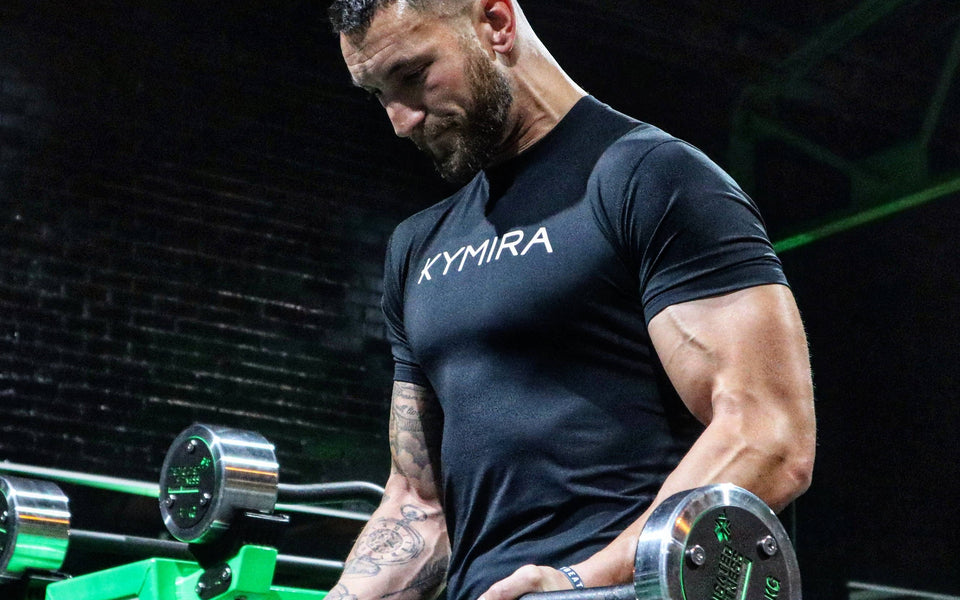In the fitness world, we're living through a period of technological innovation. In the (not too distant) past, regular exercisers would simply ‘go for a run' or ‘lift some weights', but since the dawn of the quantified-self age, technology has influenced a great number of our training decisions.
Where data was once the reserve of the labs and the coach, nowadays it's not uncommon for your everyday gym user to have a good grasp of their personal data – heart rate trends, recovery status, VO2 Max etc just as a starting point.
In this article we're going to look at the kind of data available to gym users with basic tracking equipment and how that information can inform training decisions. As always, I'll reference the evidence where appropriate and help inform you as to what data is useful and why.
Time to read: 5 minutes
Beginner
Key Points:
- Collecting and using data
- How to recognise and use calorie burn information
- Tracking workout intensity
- Sleep and recovery data
- Where KYMIRA® Sport comes in
"In the fitness world, we're living through a period of technological innovation".
Shop Performance
Collecting data is one thing... using it is another
The amount of data available via a heart rate monitor or smart watch allows people to track their progress, workout intensity and sleep easily. There may be questions surrounding the accuracy of some of this data [1] (although most of the premium watches report good information), but it serves as a very good starting point.
The question is how do you use the data you collect? Unless you know what all this information means, it's hard to use the data to make informed decisions around your training.
Here's the KYMIRA Sport suggestion on using basic data to inform your training decisions…
Calorie burn information
One of the main reasons a lot of people exercise is to control their weight. As we know, weight loss is a case of creating an energy deficit – to lose weight, we must consume fewer calories than we burn.
Creating a calorie deficit sufficiently large enough to lose weight is done in two ways…
- Consuming less than your maintenance number of calories. Say for example you needed 2300 calories to maintain your current weight, you'd instead eat around 1800, which would force your body to use stored energy (fat) to ensure a shortfall was taken care of.
- High calorie burn activities. Regular exercise helps to significantly increase energy expenditure. Frequent exercise is an excellent calorie burner [2] and will help speed the rate of fat loss in people who are controlling their calorie intake. Beyond this, NEAT (non-exercise activity thermogenesis) helps to burn calories – this is non-exercise activity such as dog walking, gardening, manual labour etc [3].
Most smart watches will provide accurate calorie burn information during workouts and daily life. This will help you to track your weight loss, giving you some forward visibility on how many calories you're able to consume without jeopardising your weight loss progress.
Use: To monitor calorie expenditure, which will inform decisions on the amount of food you can/should consume and the type of workouts/activity you should be undertaking.
Workout intensity
This is a different metric to calorie burn – it shows the intensity of a workout, which will then feed into further data on sleep and recovery (discussed next).
By tracking your workout intensity you're able to make sure that you're doing enough of the good quality work needed to reach your training goals. If you are looking to improve your VO2 Max for example, there's little point spending most of your time working at a low intensity – it just won't be effective [4].
What this means in real terms is that you have a level of accountability. Previously if your performances weren't improving at the rate you'd expect, you may be at somewhat of a loss to understand why. With workout intensity data you'll be able to see if you're working hard enough, then adjust depending on what you see in the data.
Use: To make sure you are training hard enough to achieve your fitness goals. It's an accountability partner.
Sleep and recovery
The most under-appreciated aspect of a training programme is the recovery – something we've written about a lot on the KYMIRA Sport blog over the years. A common feature of smart watches now is sleep data and recovery status.
Research into the accuracy of wrist-based sleep tracking has shown there's promising results, but it's relatively generic data [5]. For the most part this is sufficient because the reality is the average user is just looking for basic guidance on how long they were asleep for – their wakefulness state will tell them how recovered they are!
The recovery element of the watch is interesting, because depending on the technology it will use an algorithm factoring in workout volume, workout intensity and sleep quality to provide a guidance on recovery, making a suggestion on how long you should look to recover after a given workout.
Use: To guide your sleeping patterns. If you are seeing your recovery is compromised, look to improve the quality/quantity of sleep you're getting.
Data is on your side
You don't need elite level data in order to make significant improvements in your health and fitness. For the most part, the data you have access to with a smart watch is more than enough to see you progress, as long as it is used effectively.
Where KYMIRA comes in
KYMIRA infrared clothing underpins all aspects of health and fitness performance, from preparation, execution and recovery. Wearing KYMIRA garments throughout the performance cycle will help you perform better and recover more deeply. It'll help maximise training and recovery time, putting you in the best competitive shape possible.
Shop KYMIRA
References
[1] https://www.ncbi.nlm.nih.gov/pmc/articles/PMC6315254/
[3] https://pubmed.ncbi.nlm.nih.gov/12468415/
[4] https://www.ncbi.nlm.nih.gov/pmc/articles/PMC6763680/
